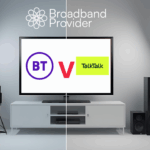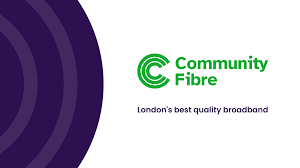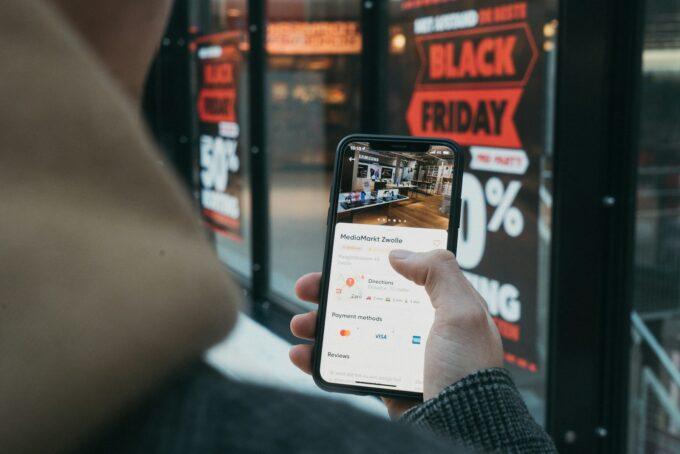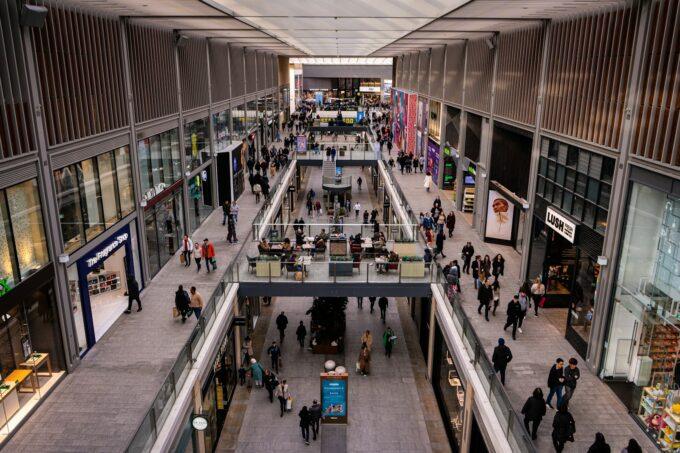Introduction
If you’re searching for better broadband, you’re not alone. With more people working from home, families streaming multiple 4K videos simultaneously, and smart home devices proliferating, your internet connection has never been more important.
Whether your current broadband is too slow, unreliable, or simply not keeping up with your household’s needs, this comprehensive guide will help you understand your options and take action. We’ll cover what “better broadband” actually means in 2024, how to assess your current situation, compare the major UK providers, and give you a clear roadmap to improvement.
This guide covers everything from quick fixes you can implement today to long-term strategies for getting the fastest, most reliable connection possible at your address.
What do we mean by “better broadband”?
Better broadband isn’t just about speed – though that’s often the most noticeable improvement. It encompasses four key areas: speed, reliability, latency, and capacity.
Types of broadband technology in the UK
- Full Fibre (FTTP) – Fibre-to-the-premises delivers speeds from 50Mbps up to 2,200Mbps with the highest reliability
- Part-Fibre (FTTC) – Fibre-to-the-cabinet offers 30-70Mbps and covers 98% of the UK
- Cable broadband – Virgin Media’s network provides up to 1,100Mbps to around 60% of premises
- Copper ADSL – The oldest technology, typically delivering 10-24Mbps maximum
UK speed classifications
- Standard broadband: Up to 24Mbps (copper lines)
- Superfast broadband: 30-70Mbps (part-fibre)
- Ultrafast broadband: 100-300Mbps (full fibre or cable)
- Gigabit-capable: 1,000Mbps+ (full fibre networks)
Real-world examples by household type
Single person/couple (light use): 30-50Mbps handles basic streaming, browsing, and video calls comfortably.
Family of 3-4 (moderate use): 100-200Mbps supports multiple HD streams, online gaming, and home working without buffering.
Large household 5+ people (heavy use): 500Mbps+ ensures everyone can stream 4K, game online, and upload large files simultaneously.
How to check your current situation
Before seeking better broadband, you need to understand what you currently have and what’s available at your address.
Step-by-step assessment
- Test your current speeds – Use the Uswitch speed test at different times (morning, evening, weekend)
- Check your technology type – Contact your provider or check your bills to confirm whether you have ADSL, FTTC, FTTP, or cable
- Discover what’s available – Use the Openreach rollout map to see full fibre availability
- Compare advertised vs actual speeds – Your provider should deliver at least 50% of advertised speeds during peak times
- Identify weak points – Note if speeds drop significantly in evenings (8-10pm) or if certain areas of your home have poor Wi-Fi
Peak time testing tip: Test between 8-10pm when networks are busiest. This reveals whether your connection can handle real-world demand.
Major UK Provider Comparison
| Provider | Speed Range | Price Range (£/month) | Technology | Coverage | Best For |
|---|---|---|---|---|---|
| Plusnet | 36-900Mbps | £26-38 | FTTC/FTTP | 98%/70% | Value & customer service |
| Sky | 36-5,000Mbps | £25-85 | FTTC/FTTP | 98%/70% | Maximum speeds |
| EE | 36-1,600Mbps | £30-80 | FTTC/FTTP | 98%/70% | Reliability |
| BT | 36-900Mbps | £28-50 | FTTC/FTTP | 98%/70% | Complete packages |
| Virgin Media | 67-1,130Mbps | £28-65 | Cable | 60% | High speeds where available |
| Vodafone | 67-2,200Mbps | £25-75 | FTTC/FTTP | 98%/15% | Latest technology |
| TalkTalk | 36-900Mbps | £23-45 | FTTC/FTTP | 98%/15% | Budget-conscious users |
Real-World Scenarios: Finding your perfect match
Sarah in rural Devon
Situation: Working from home, currently on 12Mbps ADSL, frequent video calls dropping out.
Challenge: Limited infrastructure options in rural area.
Solution: Check Project Gigabit for planned upgrades. Consider 4G/5G broadband from Three or EE as interim solution. Gigaclear may serve the area with dedicated rural full-fibre.
Recommendation: Gigaclear 200Mbps (£40/month) if available, or EE 4G router (£35/month) as backup.

The Khan family in Manchester
Situation: Five people, three teenagers gaming online, parents streaming Netflix, frequent buffering on current 50Mbps connection.
Challenge: Multiple high-bandwidth users at peak times.
Solution: Upgrade to full-fibre with 500Mbps+ speeds. Virgin Media Gig1 or Sky Superfast Plus both available in Manchester.
Recommendation: Virgin Media Gig1 (1,130Mbps, £65/month) or Sky Superfast Plus (500Mbps, £45/month).

Mike working from home in Edinburgh
Situation: Video conferencing, large file uploads to clients, current 70Mbps download but only 18Mbps upload causing issues.
Challenge: Upload speed bottleneck affecting professional work.
Solution: Switch to full-fibre provider offering symmetrical or high upload speeds. CityFibre network available via Vodafone or TalkTalk in Edinburgh.
Recommendation: Vodafone Pro Full Fibre 500Mbps (£45/month) with 75Mbps upload speeds.

Retiree couple in Cornwall
Situation: Basic internet use, email, occasional streaming, current £35/month seems expensive for light usage.
Challenge: Balancing cost with adequate performance for simple needs.
Solution: Downgrade to affordable superfast package that still provides reliability for streaming.
Recommendation: Plusnet Unlimited Fibre (36Mbps, £26/month) or TalkTalk Faster Fibre (67Mbps, £23/month).
What you can do to get better broadband
Quick wins (implement today)
- Optimize router placement – Move to central, elevated location away from walls and interference
- Use Ethernet for key devices – Connect desktop PCs, gaming consoles, and smart TVs directly via cable
- Update router firmware – Check manufacturer’s website for latest updates
- Secure your Wi-Fi – Change default password to prevent unauthorized usage eating your bandwidth
- Restart router weekly – Simple reboot can resolve temporary performance issues
Medium effort (this month)
- Upgrade your router – If over 3 years old, newer Wi-Fi 6 routers handle multiple devices better
- Add mesh system – Eero, Netgear Orbi, or BT Whole Home Wi-Fi eliminate dead spots
- Switch to higher speed package – Contact current provider about upgrade options
- Negotiate with current ISP – Ask about line quality issues or free speed upgrades for loyal customers
Long-term strategies (3-12 months)
- Wait for full-fibre rollout – Check Openreach and alternative network build plans for your area
- Community fibre schemes – In rural areas, organize neighbors for group installations
- Monitor usage growth – Track your household’s increasing device count and upgrade accordingly
- Consider alternative networks – Research CityFibre, Hyperoptic, Community Fibre availability
Provider Recommendations by Category
Best for Value: Plusnet
Consistently rated highest for customer satisfaction and lowest complaints to Ofcom. Offers reliable service from £26/month with excellent support when things go wrong. Perfect if you prioritize getting help over having the absolute fastest speeds.
Best for Speed: Sky & Vodafone
Sky leads with up to 5Gbps connections in select areas, while Vodafone offers 2.2Gbps with Wi-Fi 6E routers. Both provide the infrastructure for future-proofing your connection as household demands grow.
Most Reliable: EE
77% of customers rate EE’s reliability as good or very good – the highest in industry surveys. More expensive than alternatives but justified if consistent connection is crucial for work or business use.
Best Customer Service: Plusnet
Lowest complaint ratios per 100,000 customers according to Ofcom data. UK-based call centers and reputation for actually solving problems rather than just taking calls.
Your rights and UK programmes
Universal Service Obligation (USO)
You have the legal right to request a decent broadband connection (10Mbps download, 1Mbps upload) if not available commercially. BT must provide this, though you may pay towards installation costs exceeding £3,400.
Project Gigabit
The government’s £5 billion programme targeting hard-to-reach areas for gigabit connectivity. Check Project Gigabit areas to see if your location is included in upcoming builds.
Complaint process
If unsatisfied with service, first complain to your provider. If unresolved after 8 weeks, escalate to Ofcom or approved dispute resolution service.
Voluntary Code of Practice
Major providers signed up to deliver minimum speed guarantees. If you’re not getting the promised speeds, you can exit contracts penalty-free or receive compensation.
How to choose a new package
Package selection checklist
- Check technology availability: FTTP > Cable > FTTC > ADSL in order of preference
- Calculate speed needs: 25Mbps per simultaneous 4K stream, 5Mbps per HD stream
- Consider upload requirements: Video calls need 3-5Mbps upload, file sharing much more
- Evaluate contract length: 12-month deals cost more but offer flexibility
- Factor in installation: New connections may take 2-4 weeks, engineer visits often required
- Read the small print: Price rises, fair usage policies, early termination fees
Speed Recommendations by Household
| Household Size | Recommended Speed | Typical Use Cases | Monthly Cost Range |
|---|---|---|---|
| 1-2 people | 50-100Mbps | Light browsing, HD streaming, video calls | £25-35 |
| 3-4 people | 100-300Mbps | Multiple streams, gaming, home working | £30-45 |
| 5+ people | 500+ Mbps | 4K streaming, heavy gaming, large uploads | £45-65 |
| Heavy users/gamers | 1Gbps+ | Professional use, future-proofing | £60-85 |
UK Network Coverage Overview
| Network | Technology | UK Coverage | Max Speed | Key Providers |
|---|---|---|---|---|
| Openreach | Full fibre (FTTP) | 70% | 1,800Mbps | BT, Sky, Plusnet, EE, Vodafone |
| Virgin Media | Cable | 60% | 1,130Mbps | Virgin Media |
| CityFibre | Full fibre | 15% | 2,500Mbps | Vodafone, TalkTalk, Zen |
| Hyperoptic | Full fibre | 5% | 900Mbps | Hyperoptic |
| Community Fibre | Full fibre | 5% | 5,000Mbps | Community Fibre |
Frequently Asked Questions
Q: My Wi-Fi is slow – does that mean my broadband is bad?
A: Not necessarily. Wi-Fi issues often stem from router placement, interference, or old equipment. Test speeds with an Ethernet cable first to isolate whether the problem is your broadband connection or Wi-Fi setup.
Q: Is all fibre broadband the same?
A: No. “Fibre” can mean part-fibre (FTTC) reaching 30-70Mbps, or full-fibre (FTTP) offering 100-2,000Mbps+. Full-fibre provides much better speeds and reliability. Always check which type you’re getting.
Q: Do I really need more than 100Mbps?
A: Depends on your household. A single 4K Netflix stream uses 25Mbps. Add gaming, video calls, and smart home devices, and 100Mbps gets consumed quickly. Future-proofing with higher speeds often costs little extra.
Q: Can I get better broadband in rural areas?
A: Yes, but options vary. Check Project Gigabit for planned upgrades, consider specialist rural providers like Gigaclear, or investigate 4G/5G home broadband from Three, EE, or Vodafone as alternatives.
Q: Will switching provider automatically improve my speeds?
A: Only if you switch to better technology (e.g., ADSL to fibre) or a less congested network. Switching between providers on the same Openreach infrastructure may not improve speeds significantly.
Cost Guide: What to expect
UK broadband costs have stabilized around £26-31/month average according to 2024 data, but your specific needs determine the right price point:
Budget Options (£20-28/month)
- TalkTalk Faster Fibre: £23/month (67Mbps)
- Plusnet Unlimited Fibre: £26/month (36Mbps)
- NOW Broadband: £25/month (36Mbps)
Mid-Range (£28-40/month)
- Sky Superfast: £28/month (59Mbps)
- BT Fibre 2: £32/month (67Mbps)
- EE Fibre Plus: £35/month (67Mbps)
Premium Full-Fibre (£40-60/month)
- Virgin Media M200: £42/month (200Mbps)
- Sky Superfast Plus: £45/month (500Mbps)
- Vodafone Pro Fibre: £48/month (500Mbps)
Ultra-Fast Gigabit (£60-85/month)
- Virgin Media Gig1: £65/month (1,130Mbps)
- Vodafone Pro II: £75/month (2,200Mbps)
- Sky Gigafast: £85/month (5,000Mbps)
Future Trends: What’s Coming
The UK broadband landscape is evolving rapidly. The government’s target of 99% gigabit coverage by 2030 means significant infrastructure investment continues across the country.
Upload demands are increasing as more people work from home, stream live content, and use cloud storage. Traditional ADSL and part-fibre connections with limited upload speeds will become increasingly inadequate.
Smart home devices proliferate – the average UK home will have 50+ connected devices by 2030. Your broadband needs to handle this growing demand while maintaining performance for essential uses like work and entertainment.
Getting better broadband now positions your household for these trends rather than struggling to catch up later.
Helpful Resources
Comparison Sites
Speed Testing Tools
Coverage and Availability
Complaints and Rights
Summary & Action Checklist
Getting better broadband requires understanding your current situation, knowing what’s available, and taking systematic action. Even small improvements can make a significant difference to your daily internet experience.
Your Next Steps
- Test current speeds – Use speed test tools at peak times (8-10pm)
- Check availability – Use postcode checkers for full-fibre and alternative networks
- Optimize existing setup – Move router, update firmware, secure Wi-Fi
- Calculate household needs – Factor in all users and devices
- Compare providers – Focus on technology type, not just headline speeds
- Read contract terms – Understand price rises, installation costs, exit fees
- Monitor performance – Keep testing speeds after any changes
Remember: The best broadband is the one that reliably meets your household’s needs without overpaying for unnecessary speed. Start with quick improvements, research your options thoroughly, and don’t hesitate to switch if your current provider isn’t delivering the service you deserve.
Whether you need basic reliability for light use or gigabit speeds for a busy household, there are more options available in 2024 than ever before. Take action today to ensure your broadband supports rather than limits your digital life.
















